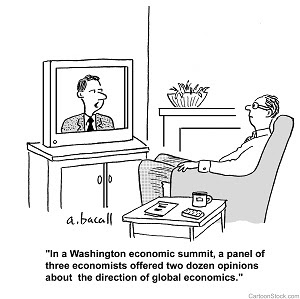Summary:
New Working Paper published by the Political Economy Research Institute (PERI). From the abstract:Interest rates have declined over the last 40 years, a period of increasing inequality. The steady decline in interest rates has been interpreted by and large as resulting from a decline of the natural rate of interest. This paper surveys the main explanations associated with the notion of a decline in the natural rate of interest, including the savings glut and the secular stagnation hypothesis. It analyzes the views according to which demographic forces were behind the decline, and might perhaps be associated to a future rise of the same natural rate. It also discusses the view according to which the role of inequality has been also to affect the natural rate of interest. Finally, views
Topics:
Matias Vernengo considers the following as important: Financial cycles, Global savings glut, hegemony, Natural Rate, Secular stagnation
This could be interesting, too:
New Working Paper published by the Political Economy Research Institute (PERI). From the abstract:Interest rates have declined over the last 40 years, a period of increasing inequality. The steady decline in interest rates has been interpreted by and large as resulting from a decline of the natural rate of interest. This paper surveys the main explanations associated with the notion of a decline in the natural rate of interest, including the savings glut and the secular stagnation hypothesis. It analyzes the views according to which demographic forces were behind the decline, and might perhaps be associated to a future rise of the same natural rate. It also discusses the view according to which the role of inequality has been also to affect the natural rate of interest. Finally, views
Topics:
Matias Vernengo considers the following as important: Financial cycles, Global savings glut, hegemony, Natural Rate, Secular stagnation
This could be interesting, too:
Matias Vernengo writes The Economist and the American Economy
Matias Vernengo writes Tom Palley on the Causes and Consequences of the War in Ukraine
Matias Vernengo writes Beyond Vulgar Economics: Conceição Tavares and Heteredox Economics
Matias Vernengo writes Ukraine: what will be done and what should be done?
New Working Paper published by the Political Economy Research Institute (PERI). From the abstract:
Interest rates have declined over the last 40 years, a period of increasing inequality. The steady decline in interest rates has been interpreted by and large as resulting from a decline of the natural rate of interest. This paper surveys the main explanations associated with the notion of a decline in the natural rate of interest, including the savings glut and the secular stagnation hypothesis. It analyzes the views according to which demographic forces were behind the decline, and might perhaps be associated to a future rise of the same natural rate. It also discusses the view according to which the role of inequality has been also to affect the natural rate of interest. Finally, views that discuss the role of monetary and financial factors, including the so-called global financial cycle literature, are discussed. It is argued that the conventional view suffers from logical and empirical problems that are ultimately insurmountable. A brief critique of the notion of a natural rate of interest, and alternative monetary theory of the decline of interest rates, as determined exogenously by the monetary authority of the hegemonic country, the United States, is proposed.
Read paper here.

